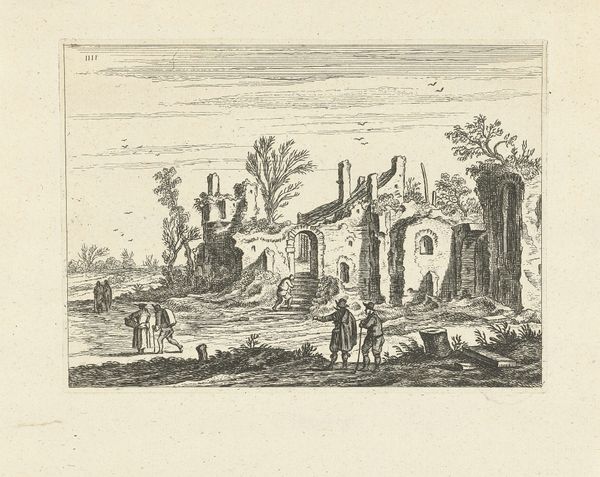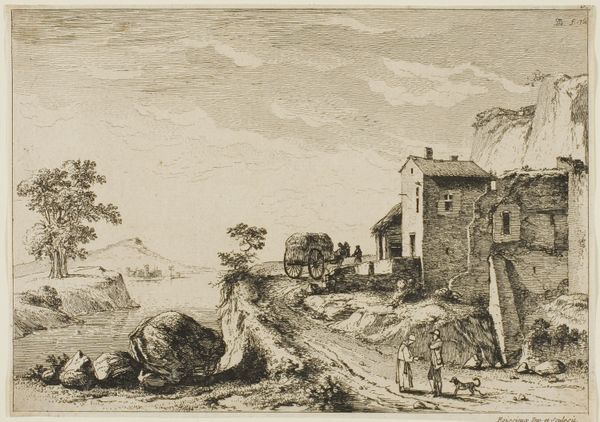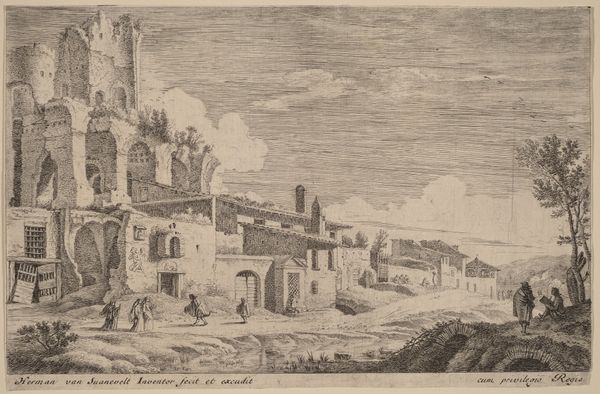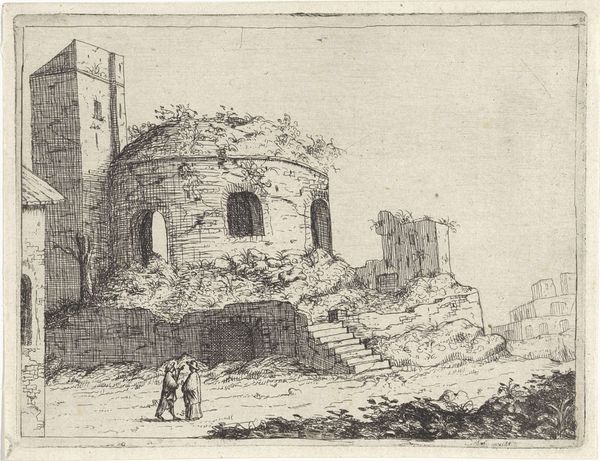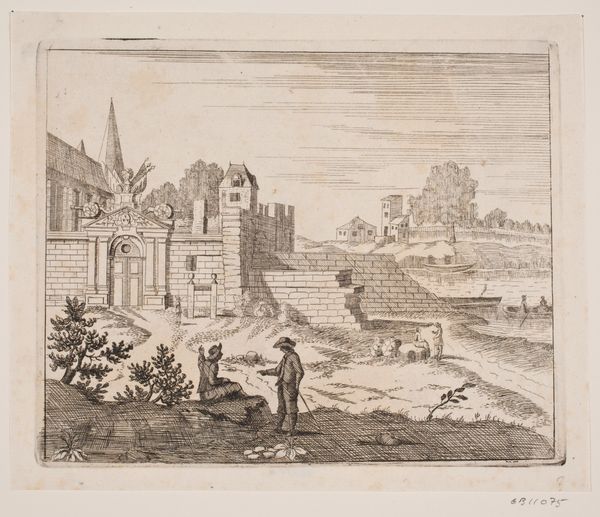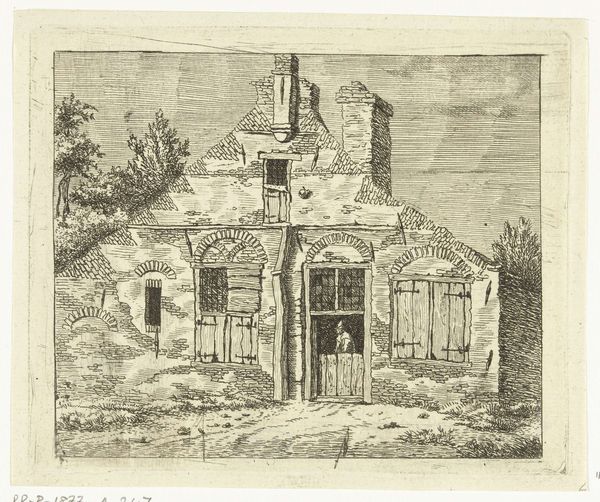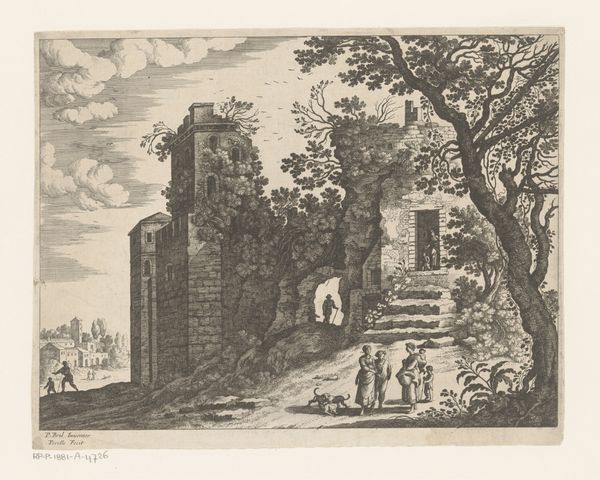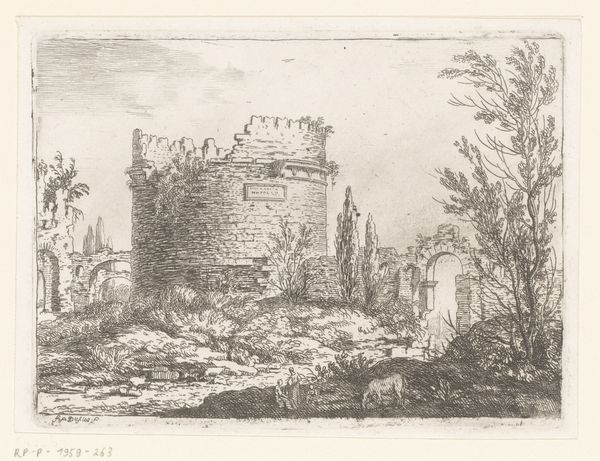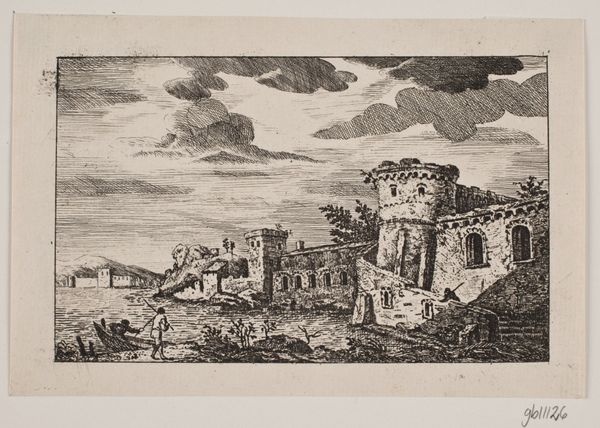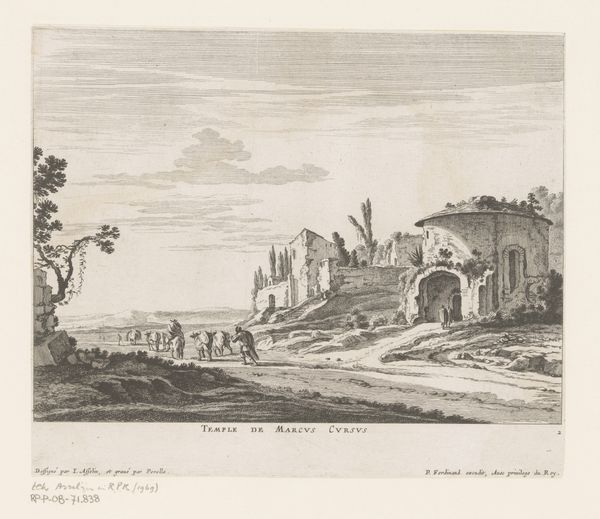
print, etching, engraving, architecture
# print
#
etching
#
landscape
#
11_renaissance
#
ancient-mediterranean
#
history-painting
#
engraving
#
architecture
Dimensions: sheet (trimmed to plate mark): 23.2 x 33.1 cm (9 1/8 x 13 1/16 in.)
Copyright: National Gallery of Art: CC0 1.0
Curator: Here we have Hieronymus Cock's "Second View of the Forum of Nerva," an etching and engraving from 1550. The detail in capturing the Forum’s architecture is remarkable, especially considering its state of ruin. Editor: The first word that comes to mind is “melancholy.” Look at the delicate lines evoking crumbling stone and a silent testament to time's passage. The composition pulls me right in. Curator: Cock's choice to portray the Forum as ruins is significant. Renaissance artists were fascinated by antiquity, but the ruined state also became a symbol. It speaks to the cyclical nature of empires and civilizations. Editor: Absolutely, and it ties into a recurring theme: the "memento mori." The ruins serve as a reminder of the fleeting nature of human achievement. Notice how nature itself is reclaiming the space—weeds sprout from the stonework. This gives an emotional depth—a subtle call to humility. Curator: Indeed. And it speaks to the papacy's own evolving relationship with antiquity. Earlier views romanticized it; Cock offers a more sober reflection. Consider the architectural symbols--the columns, arches, even the precisely etched cracks--they are political statements as much as aesthetic ones. The forum isn't just decaying, it's being reinterpreted through a Christian lens, if that makes sense. Editor: It does. Look, the artist draws our eyes toward human figures too--mere tourists dwarfed by the massive ruins around them. Their presence reinforces the idea of human insignificance in the face of time and grand historical forces. It amplifies the emotional weight of the scene. Curator: And Cock is a master of distribution. These prints made the Forum accessible to people who would likely never see it in person. His work shaped their understanding of ancient Rome and its legacy. It shaped perceptions of the rise and fall of power, culture, and beauty itself. Editor: Yes, looking closely I find this image now whispers less of just ruins and more of continuous renewal through memory, inviting us to contemplate our fleeting moment in history. Curator: Quite a sobering reflection. The Forum stands here, silently watching the new order building upon the old, a powerful historical reminder, etched in ink. Editor: A testament to transformation through the eyes, hands, and symbols, I would say, of both artist and history.
Comments
No comments
Be the first to comment and join the conversation on the ultimate creative platform.

